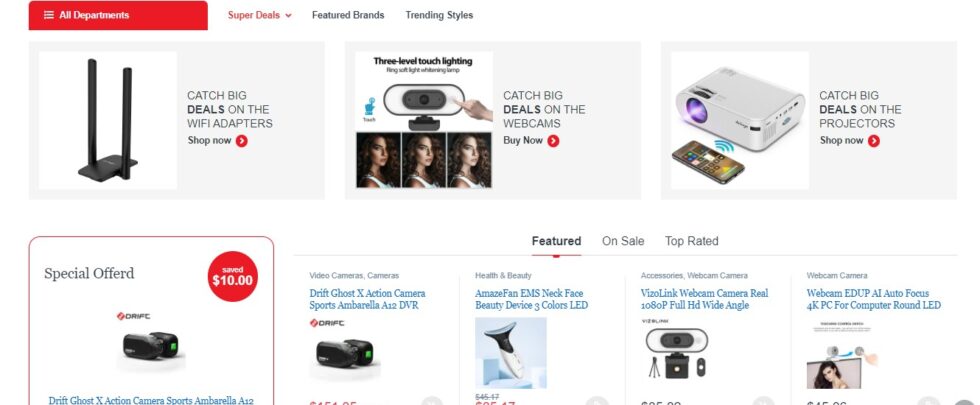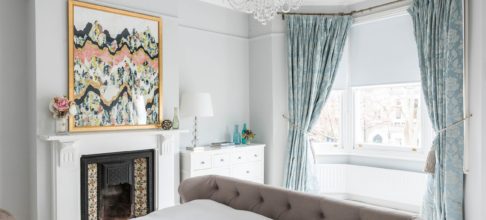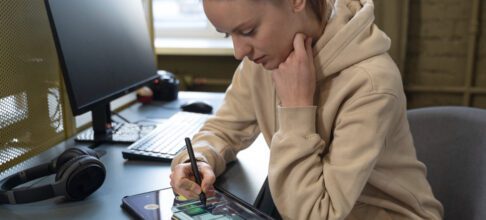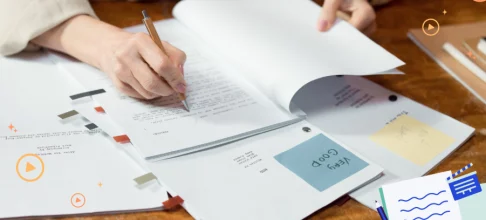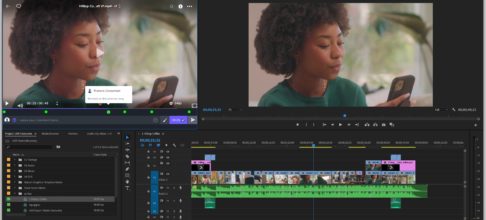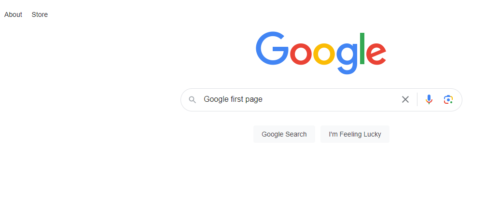Introduction
When you want to make a nice looking website, you need to find the right font and color combination. You also need to learn how to use composition in order to achieve balance between elements on your page. If you want your website to look beautiful then it is important that you know how people perceive colors and shapes when they are presented together with each other on screen or printed in books/ magazines etc.
Getting to know fonts
Fonts are the letters and symbols used to create words and sentences. There are three types of fonts: serif, sans-serif, and script. Serif fonts have little lines at the top of each letter; they're often used in books or on printed documents. Sans-serif fonts have straight sides without these little lines; they're often used on screen (i.e., on computer screens). Script typefaces have strokes that curve around as well as up and down; this gives them an artistic look but can make them difficult to read unless you know what you're looking for (for example, if someone were writing a note about their favorite sandwich shop). Finally there's display typefaces which don't really resemble any other style—they just look nice when printed out in large sizes such as billboards at bus stops or posters hung up in restaurants!
Finding the right color
Color is one of the most important aspects of graphic design. It's how you communicate with your audience, and if you don't understand how color works, it can be difficult to create effective designs. In this section, we'll look at some basic concepts in color theory so that you can use them when choosing colors for your next project.
The first thing to know about color is that there are three main types: hue (red), brightness (white), and value (black). These categories describe what each shade looks like on their own—but they also have different meanings when combined together into a color scheme or palette.
Hue refers directly to how intense something appears across all wavelengths; it's essentially just a word for reds or greens but without any additional context about their size or position relative to each other on an axis such as temperature scale (ease-in vs ease-out). Brightness describes how bright something appears in comparison with its surroundings; this could mean both luminance level ("how much light") as well as reflectivity ("how much light bounces back off"). Value describes things like saturation level—that is whether there's enough contrast between two areas where one side has more white versus black pixels than other parts do."
Learning about anatomy of graphic design
Learning about anatomy of graphic design is important because it helps you understand how all the elements of graphic design work together in order to create a final product.
- Learn the basics of what makes up good composition, such as color and shape.
- Learn about layout and design principles, like balance and symmetry.
- Understand how typography works, including font contrast and size scale (for example: serif vs sans-serif).
Understanding composition
Composition is the arrangement of elements on a page. It's important to know how to use composition in your designs because it can make or break a design. The golden ratio (1:1) is one way to achieve an aesthetically pleasing composition that works well with both type and images.
In this article, we'll be looking at how you can use the golden ratio in your designs by focusing on two specific ways: grid systems and modular design patterns.
Learning how to use the golden ratio
The golden ratio is a mathematical formula that has been used for thousands of years. It can be applied to the layout of a website, and it can be used to create a balanced design.
The golden ratio is found in nature: it's one of the reasons why apples and pears have their forms so similar (the apple's round shape being an example), or why we have fingerprints that resemble each other so closely. The golden ratio appears frequently in art, architecture, and design as well (for example: Michelangelo's David).
Seeing how you can use design templates & themes
Templates are a great way to get started. They can help you build your own site, or they can be used as starting points for other projects.
There are many different types of templates available online; here’s a list
- HTML5 - This standard describes how websites should be built and designed using modern web technologies like HTML5 and CSS3 (which most developers know as "CSS"). It also has guidelines on accessibility issues such as color contrast and text size requirements for users with low vision or reading impairments.
Looking at the latest trends in UX/UI design
UX design is the process of enhancing user satisfaction by improving the usability, accessibility, and pleasure provided in the interaction between the user and the product. It involves a combination of research and problem-solving skills to develop products that people want to use.
UX designer has a unique set of skills which includes an understanding about human psychology along with other aspects like communication strategies, visual design principles etc., along with developing effective solutions for various problems faced by consumers at various stages during their interaction with technology products such as mobile apps or websites.
Making a nice looking website is not as hard as it looks if you know where to start.
The first step in making a nice looking website is knowing where to start. If you have the knowledge, it will make your life easier. Knowledge is power and knowing what works best for your business can save you time and money.
There are many ways that designers can create websites, but there are some things they always do: use templates, use design themes and follow trends in UX/UI design. For more information about these topics I suggest reading this book by Jeffrey Zeldman called Designing with Web Standards (2004).
Conclusion
We hope that this article has given you some insights into how simple it is to get started with design and graphics. If you want to get more info on how to improve your website's look and feel, check out our other articles, or even contact us for a free consultation today!

